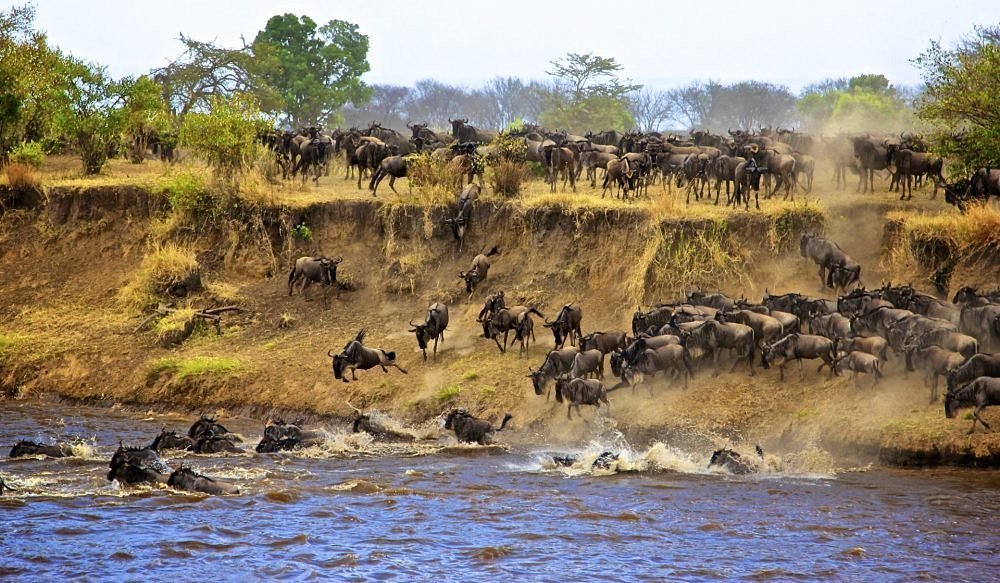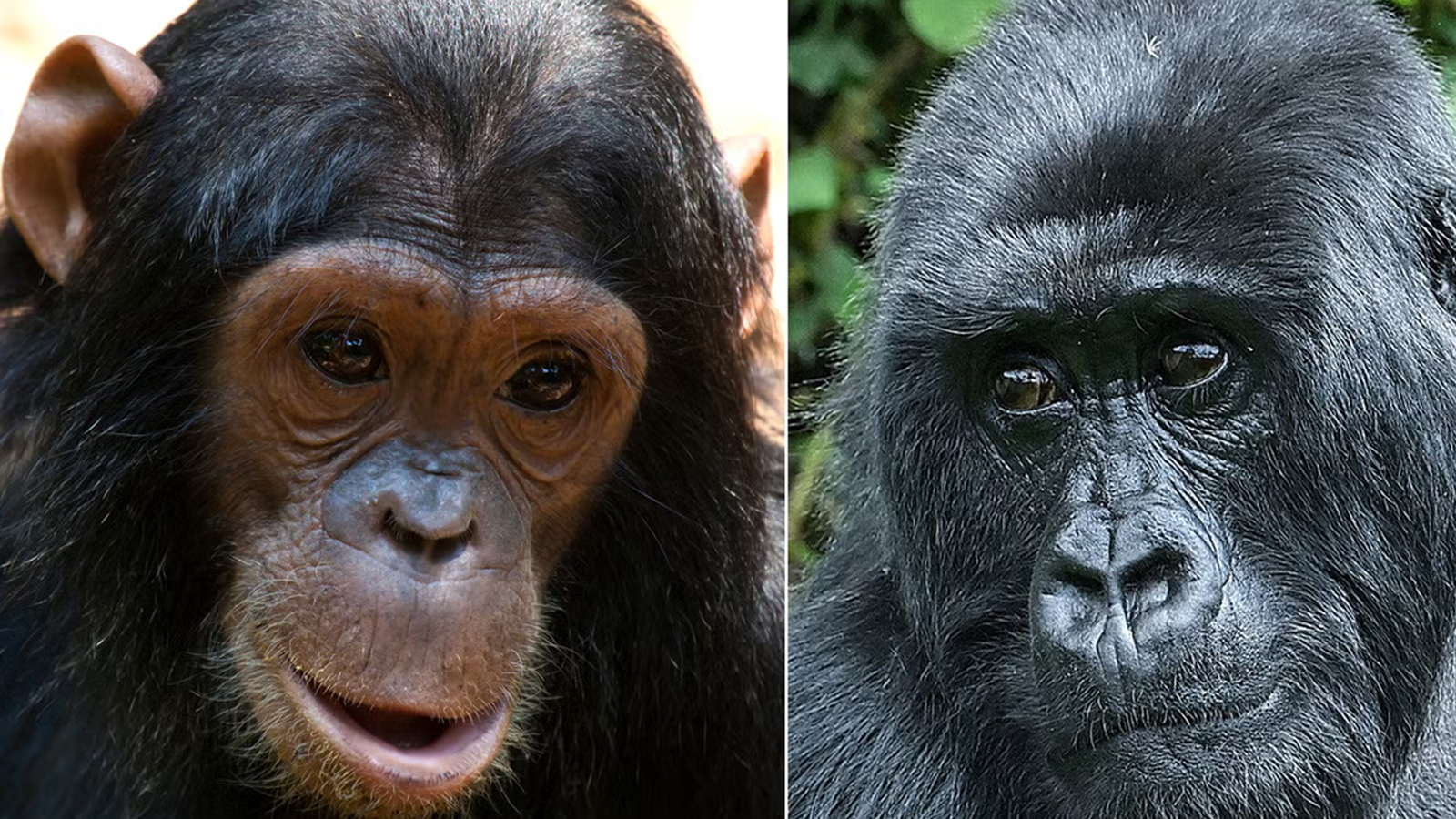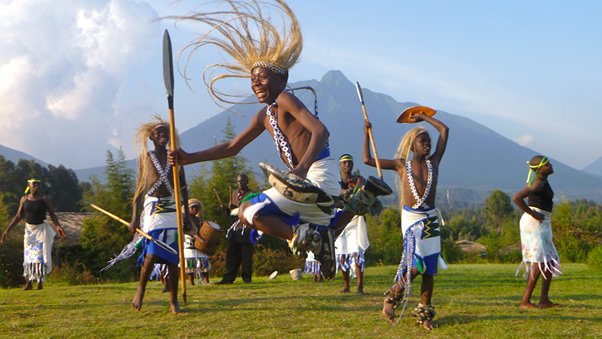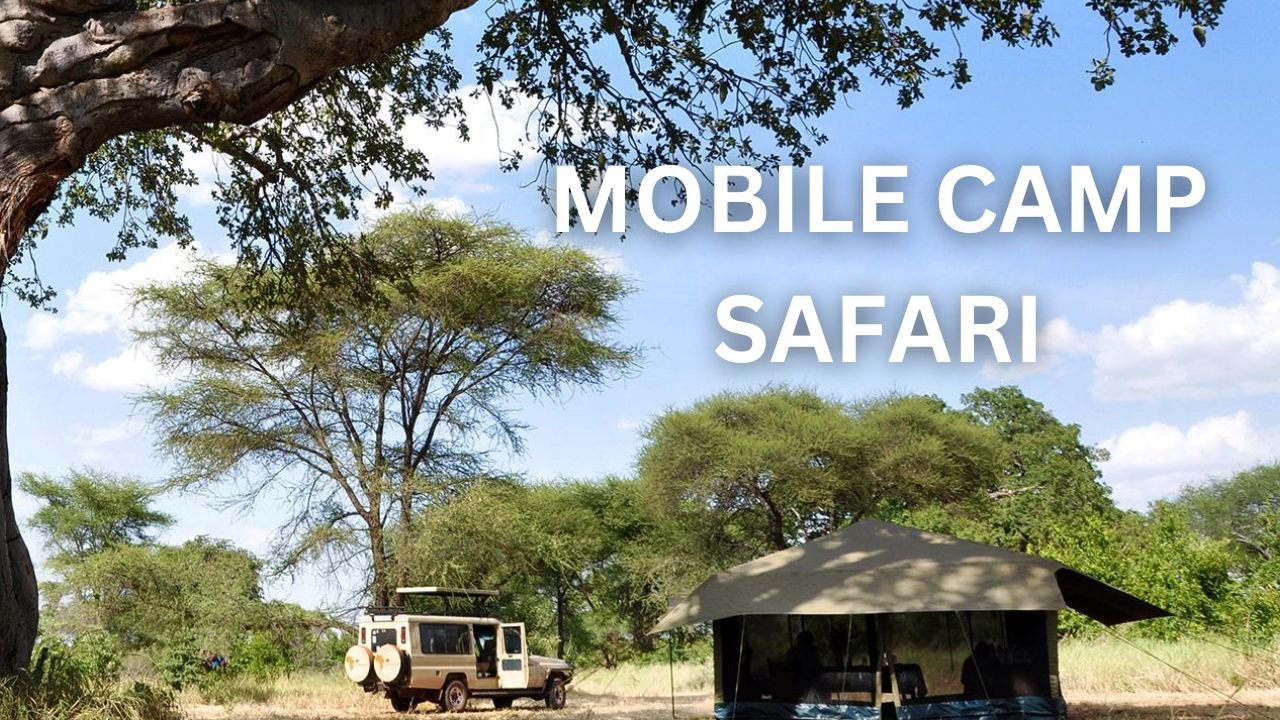The Great Wildebeest Migration: What, Where & Best Time to Visit
What is the Great Wildebeest Migration?
The Great Wildebeest Migration is the most sought after and largest overland wildlife migration on Earth, featuring over 1.5 million wildebeest, 200,000 zebras, and 300,000 gazelles moving in a continuous cycle across Tanzania’s Serengeti National Park and Kenya’s Masai Mara Reserve. This great migration of wildebeests natural wonder is a year-round phenomenon driven by rainfall, fresh grazing, and survival instincts, offering some of the most dramatic wildlife encounters in the world.
The great wildebeests migrating herds start their long trek north from Tanzania’s Serengeti National Park to Masai Mara National Reserve in Kenya in search for greener pastures. Their journey runs in a clockwise following an old route, the journey covers approximately 2,900 kilometers and is filled with dangerous attacks such as Nile crocodiles in the Grumeti and Mara River as they try to cross and predators such as lions, leopards, cheetahs and African Wild dogs always following the herds. An estimated 250,000 wildebeests and over 30,000 zebras and gazelles die en-route annual due to predators, exhaustion, thirst and diseases.
The River Crossings (Mara and Grumeti River Crossings) are the most dangerous events of the Great Wildebeest Migration, herds usually gather in thousands to forge the waters of the Grumeti River in Tanzania and the Mara River in Tanzania and Kenya (along the border of Serengeti national park and Masai Mara National Reserve).
At all the crossing points, the herds face off with the strong currents and lurking crocodiles. Some of the herds are washed away by the currents and the crocodiles kills the panicking animals which makes the river crossings not for the faint-hearted, however it is the most dramatic wildlife encounters in Africa and some of the most rewarding events for wildlife photographers.
Watching the plains of Serengeti National Park and Masai Mara National Reserve filled with millions of wildebeests and thousands of zebras, eland and gazelles is very exciting. The plenty of flesh to feast on attracts lots of predators such as lions, leopards, cheetahs, hyenas and wildlife seen following the herds providing visitors with the opportunity to see hunting action.
Where does the Great Wildebeest Migration occur?
The Great Wildebeest Migration is one of nature’s most spectacular events, unfolding across Tanzania’s Serengeti National Park and Kenya’s Masai Mara National Reserve. This incredible journey follows a continuous annual cycle, offering different wildlife experiences depending on the season and location.
The Great Wildebeest Migration in Tanzania
December – March (Calving Season)
In this time of the year, the herds congregate in the plains of Serengeti National Park and areas of Ngorongoro in Northern Tanzania, due to the annual rains the plains are lush. This is the calving season and an excellent time to see thousands of calves being born and hunting action as predators snatch away the weak babies. The Southern Ndutu and Salei Plains are the best places to spot the herds in their calving.
April – May (Transition to Western Serengeti)
As the rains continue, the herds move northwest into the Western Corridor of the Serengeti. While some lodges close due to muddy roads, mobile tented camps remain operational. This period offers fewer crowds and dramatic stormy skies, making it ideal for photographers.
June – July (Grumeti River Crossings)
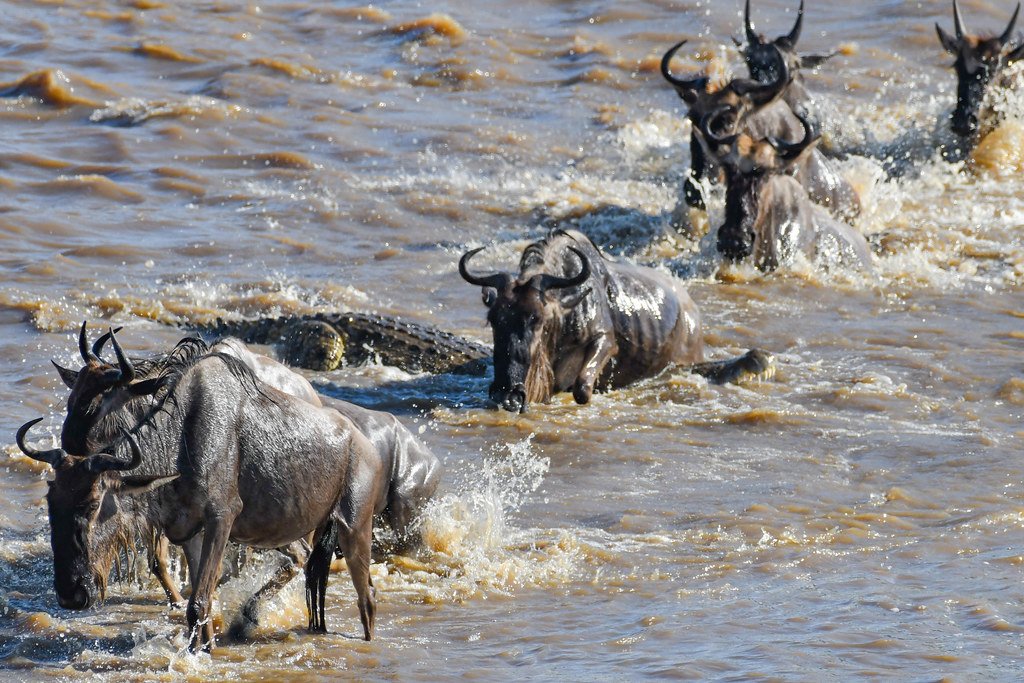
By June, the herds consolidate into massive groups and begin their push north. The first major obstacle is the Grumeti River, where crocodiles lie in wait. Witnessing these river crossings is thrilling, with lodges like Serengeti Serena Lodge and Grumeti Serengeti Tented Camp offering front-row seats.
The Great Wildebeest Migration in Kenya
August (Mara River Crossings – The Deadliest Phase)
In this time of the year, as the grass of the Western Serengeti turn yellow the herds continue north. After crossing the Grumeti River in Tanzania, the migrating herds (wildebeests, zebras and elands) head to the Lamai Wedge and Mara Triangle in Kenya. As the wildebeests migrate, they get to the lush plains of the Mara, the have to make another river crossing at Mara River.
The Mara River Crossing is the deadliest event of the Great Migration and nerve wrecking to watch and the same time fascinating, watching the herds swept away by the high speed running water and some snatched by the fierce Nile Crocodiles is not for fainted hearted to watch.
To watch the Mara River Crossing, the best places to stay at are Kichwa Tembo Camp, Bateleur Camp and Sayari Mara Camp.
September – November (Grazing in the Mara Plains)
The Mara’s fertile grasslands sustain the herds, attracting lions, leopards, and cheetahs in large numbers. This is prime time for big cat sightings, with luxury lodges like Mara Serena Safari Lodge offering exceptional game drives.
The best accommodation options to stay at include the Governor’s Camp and Mara Serena Safari Lodge.
November – December (Return to Tanzania)
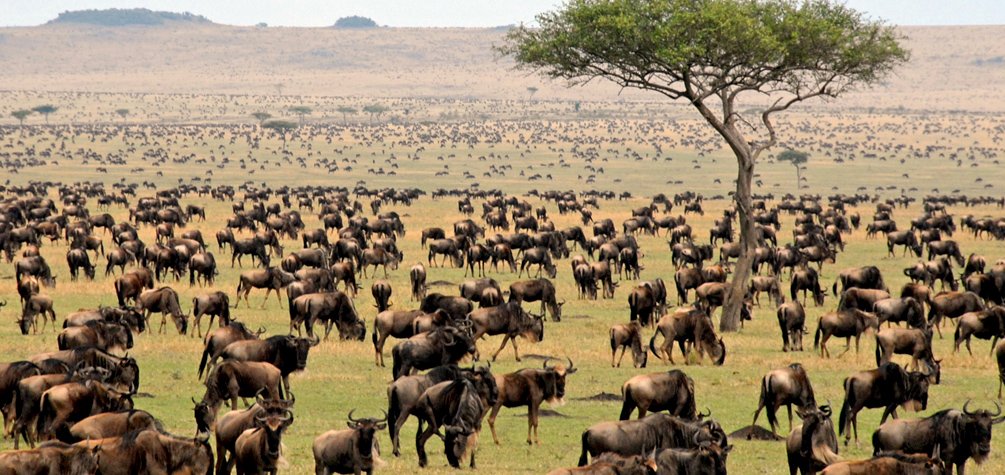
As the southern Serengeti greens again, the herds begin their journey back to Tanzania, completing the cycle. The Lobo area becomes a hotspot for early calving sightings, with Klein’s Camp being an excellent base.
Best accommodations to stay are Klein’s Camp and campsites in Lobo area.
When is the best time to visit the Great Migration?
- January–March for calving season (Southern Serengeti)
- July–October for river crossings (Northern Serengeti & Masai Mara)
- September–November for predator action (Masai Mara)
The Great Wildebeest Migration is a year-round phenomenon, with each phase offering unique wildlife spectacles. Whether you seek dramatic river crossings or intimate predator encounters, planning your visit around these key periods ensures an unforgettable safari experience!
